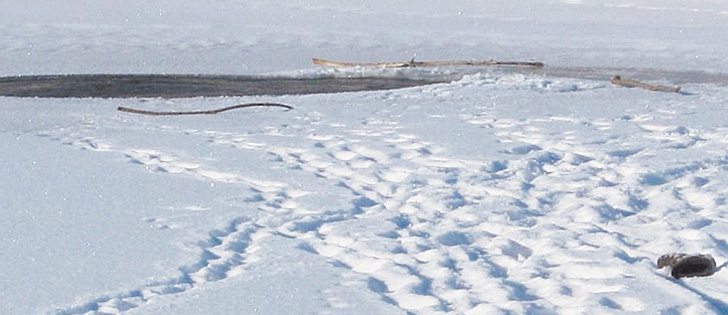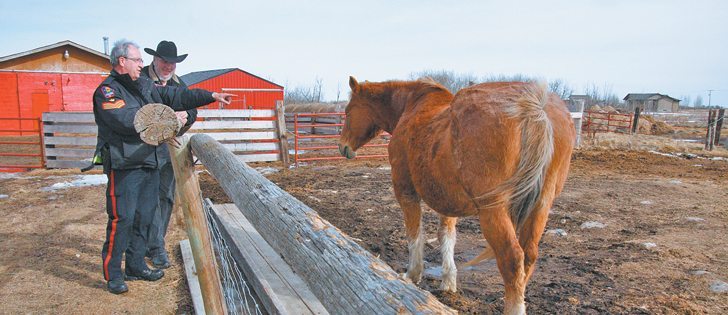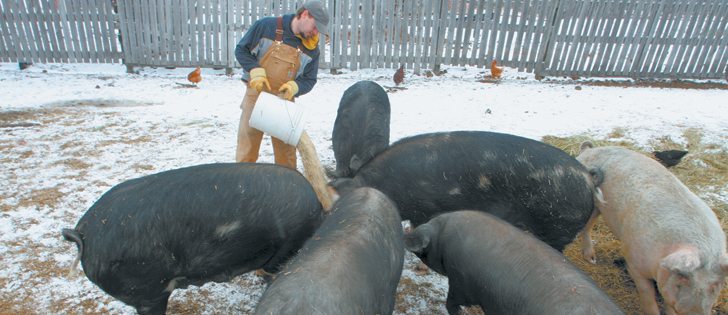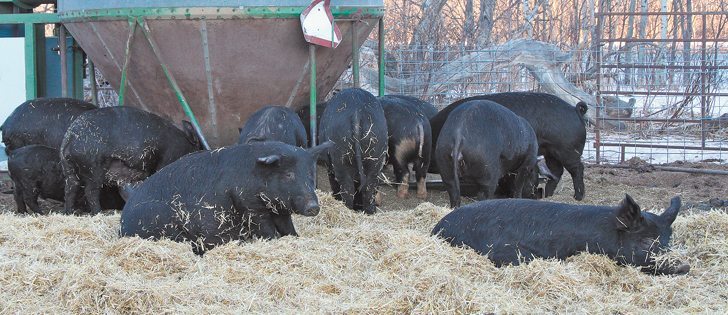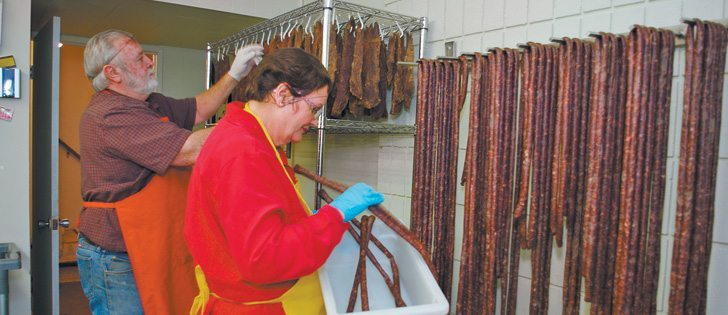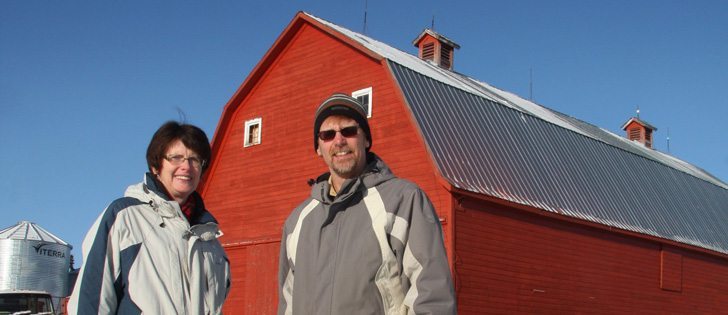Quick action | Boys treated for hypothermia
A rollercoaster of emotions continues for Paula Goossen, more than a week after she almost lost her son in an icy dugout.
She praises higher powers for a happy ending but shudders about what might have been.
“One minute you’re just so thankful they’re OK and the next you’re like, ‘oh, it could have been so different.’ The emotions are running high,” she said.
On the afternoon of Feb. 7, a group of five young boys, including her son, climbed a four-foot page wire fence surrounding an aerated dugout and made their way to the bubbling water hole. A boy’s game of throwing sticks into the water soon slid into a crisis.
Read Also

VIDEO: Bittersweet harvest for this family farmhand
Bruce Burnett helps his brother harvest wheat and canola for the last time on the family farm in Manitoba where they both grew up.
Five-year-old friends Mordecai Goossen and Casey Barkman lost their footing and fell into the freezing water, which was three metres deep. Zachary Goossen and Micah Barkman, both four years old, grabbed the boys in the water but were unable to pull them out. They sent four-year-old Joseph Warkentin to climb the fence alone and run to the nearby church where the boys’ mothers were making a quilt.
Women members of the Church of God in Christ Mennonite just north of Hyas, Sask., meet there once a month to work on a quilt, which they donate to charity.
Standing on the church steps, Goossen saw past young Warkentin’s expression of alarm at two boys standing on the ice, 90 metres away. She thought one of the boys standing was her son.
“As I got closer, I realized there was two boys in the hole and my son was in the hole, too,” she said.
What happens next remains a haze for Goossen.
“There was a fence to climb and I somehow got over that without realizing how I did this. It was just a fog and I just believe that guardian angels were there with me,” she said.
Goossen shooed away the boys on the ice who were still clutching their friends. She crawled out to the holes on hands and knees and heard whimpering sounds. One by one, Goossen pulled the boys out.
“I just acted on instinct and there wasn’t much feelings and emotions even that I could recognize,” she said.
“I thought that this ice was going to want to break under me but just kept going without putting together the pieces to how I should be doing this. Somehow the ice held. Must have been some higher powers holding us up there for me to be able to pull them out with all their weight plus mine.”
The boys were lifted over the fence and carried to the church. An ambulance arrived 20 minutes later and they were treated for mild hypothermia.
Days later, Goossen struggled to understand what compelled her son, who is scared of deep water, to go near the holes in the ice.
“In summer, even with a life jacket, he won’t go where he can’t stand,” she said.
“He loves to play in water, but not where he doesn’t have a strong footing…They were, I guess, boys and saw something that attracted them.”
Kamsack RCMP staff sergeant Greg Nichol uses the word lucky to describe the incident.
This isn’t the first time this winter people have gone through ice in central and southern Saskatchewan.
Nichol cautioned people to be aware of dugouts and other bodies of water during this unseasonably mild winter.
“Just a warning to people to stay off the ice, especially in aerated dugouts and anywhere where there’s moving water because with the warm winter we’ve had, the ice is probably unstable and thin in lots of locations,” he said.
Nichol conceded the boys were playing, but said they put significant effort into climbing the fence to enter the dugout area.
Goossen put it another way: “They know well that they will never be doing that again. The punishment was there already.”




